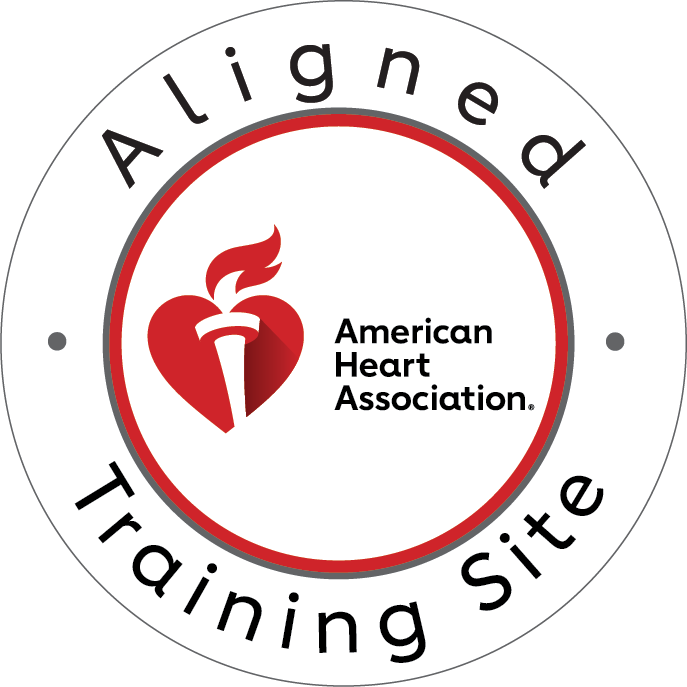In emergencies where someone’s life hangs in the balance, knowing how to perform Cardiopulmonary Resuscitation (CPR) correctly can make the difference between life and death. While many people associate CPR with chest compressions, mouth-to-mouth resuscitation remains a critical component of comprehensive life-saving techniques. This article explores the current guidelines, best practices, and essential training considerations for mouth-to-mouth resuscitation as part of modern CPR protocols.
Is Mouth-to-Mouth Still Taught in CPR?
The short answer is yes—mouth-to-mouth resuscitation is an integral part of CPR training, though its application has evolved significantly over the years. Current guidelines from major health organizations like the American Heart Association (AHA) now differentiate between scenarios where rescue breaths are recommended and where compression-only CPR might be appropriate.
For healthcare providers and professional rescuers, comprehensive CPR training still includes mouth-to-mouth techniques as part of the standard protocol. These professionals learn what’s known as conventional CPR, which combines chest compressions with rescue breathing in a specific ratio. The rationale is straightforward: in many cardiac arrest situations, particularly those resulting from drowning, drug overdose, or respiratory issues, the victim needs both circulation assistance (compressions) and oxygen delivery (rescue breaths).
However, for untrained bystanders or those uncomfortable with mouth-to-mouth contact, compression-only CPR (also called “Hands-Only CPR”) has gained prominence. This simplified approach focuses exclusively on chest compressions without rescue breaths. The AHA began promoting this alternative in 2008 after research showed that many potential rescuers hesitated to perform CPR due to concerns about mouth-to-mouth contact.
Despite this shift, learning proper mouth-to-mouth technique remains valuable for several reasons:
- It provides a complete resuscitation approach when oxygen delivery is crucial
- It remains the preferred method for infant and child CPR
- It’s essential for drowning victims and asphyxiation cases
- Healthcare providers are still required to know and perform rescue breathing
The key takeaway is that while alternatives exist, mouth-to-mouth resuscitation continues to be taught as an important life-saving skill, particularly for those pursuing comprehensive CPR certification.
Pocket Mask or Mouth-to-Mouth: Safety Considerations
Rescuers have options that balance effectiveness with personal safety when performing rescue breathing. Direct mouth-to-mouth contact has traditionally been the standard technique, but barrier devices now offer alternatives that address hygiene and transmission concerns.
Direct Mouth-to-Mouth Technique
The traditional mouth-to-mouth method involves:
- Ensuring an open airway by tilting the victim’s head back and lifting their chin
- Pinching the nose closed with your thumb and index finger
- Creating a seal by placing your mouth completely over the victim’s mouth
- Delivering two rescue breaths, each lasting about one second, and causing a visible chest rise
This direct approach is immediately available in emergencies but carries potential concerns about disease transmission and psychological barriers for some rescuers.
Barrier Devices for Mouth-to-Mouth
Modern CPR training increasingly emphasizes the use of barrier devices that protect while maintaining effective rescue breathing:
Pocket Masks: These portable, clear plastic masks create a seal over the victim’s mouth and nose. With a one-way valve that prevents backflow of air and bodily fluids, pocket masks offer significant protection while maintaining resuscitation efficiency. Many feature oxygen inlet ports for enhanced effectiveness when supplemental oxygen is available.
Pocket masks are preferred by healthcare professionals and trained rescuers because they:
- Provide a better seal than face shields
- Allow for more effective ventilation
- Create distance between the rescuer and the victim
- Often include bacterial filters
- Can be reused after proper disinfection
Face Shields: These flat, portable barriers typically consist of a thin plastic film with a filter or one-way valve. Face shields are less bulky than pocket masks, making them convenient for carrying in a wallet, purse, or first aid kit.
While not as effective as pocket masks in creating an optimal seal, face shields offer:
- Basic protection against direct contact
- Portability and convenience
- Low cost and easy accessibility
- A lower profile, which may be less intimidating for some rescuers
The American Heart Association and other training organizations now routinely include barrier device training in their CPR courses. Many certification programs provide participants with a personal pocket mask or face shield as part of their training materials.
How Many Times Do You Do CPR Before Mouth-to-Mouth?
Understanding the rhythm and ratio of compressions to breaths is crucial for effective CPR. Current protocols have evolved based on extensive research to optimize survival outcomes.
Standard CPR Ratios for Adults
For adult victims, the current AHA guidelines recommend:
- 30:2 ratio – 30 chest compressions followed by 2 rescue breaths
- Compression depth of 2-2.4 inches (5-6 cm)
- Compression rate of 100-120 compressions per minute
- Minimal interruptions to compressions (less than 10 seconds for breaths)
This sequence continues until emergency medical services arrive, the victim shows signs of life, or the rescuer becomes too exhausted to continue.
Modified Approaches for Children and Infants
For pediatric victims (children and infants), the protocol differs slightly:
- 30:2 ratio for single rescuers (same as adults)
- 15:2 ratio for two healthcare provider rescuers
- Compression depth of approximately one-third the depth of the chest
- Compression rate of 100-120 compressions per minute
The emphasis on more frequent rescue breaths for children reflects their increased likelihood of respiratory-based cardiac arrest rather than primary cardiac issues.
CPR Sequencing: The CAB Approach
Modern CPR training follows a CAB sequence (Compressions, Airway, Breathing) rather than the older ABC approach:
- Compressions: Begin with chest compressions immediately
- Airway: Open the airway using the head-tilt, chin-lift method
- Breathing: Provide rescue breaths using mouth-to-mouth or a barrier device
This sequence prioritizes circulation through immediate chest compressions before attempting rescue breathing, reflecting research showing that blood oxygen levels remain adequate for the first few minutes of cardiac arrest, while circulation stops immediately.
Special Scenarios
In certain situations, the standard ratio may be modified:
- Drowning victims: Some protocols recommend starting with 2 rescue breaths before compressions
- Professional healthcare settings: May use different ratios with advanced airways in place
- Pregnancy: Modified positioning may be necessary, but the compression-breath ratio remains the same
The key principle remains consistent—minimizing interruptions to chest compressions while ensuring adequate oxygenation through properly executed mouth-to-mouth rescue breaths.
Mouth-to-Mouth Barriers: Types and Effectiveness
Concerns about disease transmission during mouth-to-mouth resuscitation have led to the development of various barrier devices. Understanding the options available and their relative effectiveness can help rescuers make informed choices about their emergency preparedness.
Types of Mouth-to-Mouth Barriers
- Face Shields: These thin, flat barriers typically consist of a plastic film with a filter or valve at the center. Most face shields feature:
- A one-way valve to prevent backflow
- A hydrophobic filter that blocks moisture
- Clear plastic to allow visualization of the victim’s lips for color assessment
- Compact design for portability
- Pocket Masks More substantial than face shields, pocket masks provide enhanced protection and effectiveness:
- Rigid plastic construction creates a better seal around the mouth and nose
- More effective one-way valves prevent contamination
- Often include oxygen inlets for supplementary oxygen
- Some models feature replaceable filters for additional protection
- Usually fold or collapse for storage in a protective case
- Bag-Valve-Mask (BVM) Devices. Though primarily used by healthcare professionals, BVMs represent the gold standard for rescue breathing:
- Eliminate direct contact between the rescuer and the victim
- Deliver precise volumes of air with each squeeze
- Allow for connection to oxygen sources
- Requires significant training for effective use
- Typically not carried by lay rescuers due to size and complexity
Effectiveness Considerations
Research has shown that barrier devices vary in their effectiveness along several dimensions:
Protection Level: Studies indicate that all barriers significantly reduce the risk of disease transmission, though none eliminate it entirely. Pocket masks generally provide superior protection compared to face shields due to better sealing and more substantial barrier materials.
Ventilation Efficiency: Research comparing direct mouth-to-mouth with barrier-assisted ventilation shows:
- Direct mouth-to-mouth achieves the highest tidal volumes
- Pocket masks achieve 70-80% of direct mouth-to-mouth volumes
- Face shields achieve 50-60% of direct mouth-to-mouth volumes
- BVMs can exceed direct mouth-to-mouth volumes when used by trained providers
Ease of Use: The effectiveness of any barrier device depends significantly on the rescuer’s familiarity and comfort with its use:
- Face shields require minimal training but may be challenging to position properly during stress
- Pocket masks require practice to achieve proper positioning and sealing
- BVMs require substantial training and regular practice for effective use
Availability: The best barrier device is ultimately the one available at the time of the emergency:
- Face shields are inexpensive and easily carried in wallets or key chains
- Pocket masks typically come with CPR certification courses, but are bulkier to carry
- Public access defibrillators (AEDs) often include face shields
Practical Recommendations
For individuals seeking optimal preparation for potential emergencies:
- Get proper training: Learn proper technique for both direct mouth-to-mouth and barrier-assisted rescue breathing
- Carry personal protection: Keep at least a face shield in your wallet, purse, or keychain
- Consider a pocket mask: For those with specific health concerns or professional responsibilities
- Practice regularly: Maintain skills through refresher courses and mental rehearsal
The most critical factor remains willingness to act—even imperfect CPR significantly improves survival compared to no intervention at all.
Mastering Mouth-to-Mouth Technique: Step-by-Step
Performing effective mouth-to-mouth resuscitation requires proper technique. Whether using direct contact or a barrier device, following these steps ensures maximum effectiveness while minimizing risks.
Preparing for Mouth-to-Mouth
Before beginning rescue breathing:
- Ensure scene safety: Make sure there are no hazards that could harm you or the victim
- Check responsiveness: Tap the victim’s shoulders and shout, “Are you okay?”
- Call for help: Activate emergency response or have someone else do it
- Position the victim: Place them on their back on a firm, flat surface
- Open the airway: Use the head-tilt, chin-lift maneuver to open the airway
- Place one hand on the forehead and tilt the head back gently
- Place two fingers of your other hand under the bony part of the lower jaw and lift
Direct Mouth-to-Mouth Technique
When performing mouth-to-mouth without barriers:
- Maintain head tilt: Keep the airway open with the head-tilt, chin-lift position
- Pinch the nose: Use your thumb and index finger to pinch the victim’s nostrils closed
- Create a seal: Cover the victim’s mouth completely with your mouth
- Deliver breaths: Give two rescue breaths, each lasting about 1 second
- Each breath should be just enough to make the chest visibly rise
- Avoid excessive force that could push air into the stomach
- Watch for chest rise: Ensure the chest rises with each breath
- Allow for passive exhalation: Remove your mouth between breaths to allow the air to exit
Using a Barrier Device
When using a face shield or pocket mask:
- Position the barrier:
- For face shields: Center the valve over the victim’s mouth
- For pocket masks: Position the mask with the narrow end over the bridge of the nose
- Create a seal:
- For face shields: Press the shield firmly around the mouth with your fingers
- For pocket masks: Place both hands around the edge of the mask, creating a tight seal
- Deliver breaths:
- For face shields: Breathe through the valve while maintaining the seal
- For pocket masks: Breathe through the one-way valve or mouthpiece
- Observe chest rise: Confirm effective ventilation by watching for chest movement
Troubleshooting Common Issues
If the chest doesn’t rise during rescue breaths:
- Reposition the head: Try adjusting the head-tilt position
- Check for airway obstruction: Look for visible blockages in the mouth
- Reapply the seal: Ensure complete coverage of the mouth (or better mask positioning)
- Adjust breath volume: Try delivering slightly more air with each breath
- Consider alternatives: If breaths consistently fail, focus on high-quality chest compressions
Special Considerations for Different Age Groups
Adults:
- Full head-tilt is appropriate
- Firm seal over the mouth only
- Moderate breath volume (enough to see chest rise)
Children (1-8 years):
- Less extreme head-tilt (to avoid overextension)
- Seal covers the mouth only or mouth and nose (depending on face size)
- Gentler breaths (proportional to body size)
Infants (under 1 year):
- Minimal head-tilt (head in “sniffing position”)
- The rescuer’s mouth covers both the infant’s mouth and nose
- Very gentle puffs of air (just enough to see the chest rise)
Mastering proper mouth-to-mouth technique requires hands-on practice under qualified instruction. Regular refresher training helps maintain these critical skills for emergencies.
Integrating Mouth-to-Mouth into Complete CPR Protocol
Effective CPR involves more than just knowing how to perform individual techniques—it requires understanding how mouth-to-mouth resuscitation fits into the broader emergency response protocol. This integrated approach ensures that all life-saving measures work together seamlessly.
The Complete CPR Sequence
The current AHA guidelines recommend following this sequence for adult victims:
- Check for responsiveness and normal breathing
- Tap shoulders and shout
- Look for normal breathing (not gasping)
- Activate the emergency response system
- Call 911 or have someone else call
- Send someone to get an AED if available
- Begin chest compressions
- Position hands in the center of the chest
- Compress at least 2 inches deep at 100-120 compressions per minute
- Allow complete chest recoil between compressions
- Open the airway and deliver rescue breaths
- After 30 compressions, open the airway using head-tilt, chin-lift
- Deliver 2 rescue breaths using mouth-to-mouth or a barrier device
- Each breath should last about 1 second and cause a visible chest rise
- Continue CPR cycles
- Maintain a 30:2 ratio of compressions to breaths
- Minimize interruptions to compressions
- Switch rescuers every 2 minutes if possible to prevent fatigue
- Integrate an AED when available
- Turn on the AED and follow voice prompts
- Stop CPR during analysis and shock delivery
- Resume CPR immediately after shock or if no shock is advised
Adapting to Different Scenarios
The standard protocol may need adjustment based on specific circumstances:
Single Rescuer vs. Multiple Rescuers:
- Single rescuers should follow the 30:2 ratio
- Two healthcare providers rescuing a child may use a 15:2 ratio
- With multiple rescuers, roles can be assigned (compressions, breathing, monitoring)
Professional Healthcare Settings:
- Advanced airways may allow for continuous compressions without pausing
- One rescuer delivers breaths while another continues compressions
- Specialized equipment may provide mechanical compression
Special Victim Populations:
- Pregnant victims may need modified positioning
- Trauma victims require special attention to potential neck injuries
- Drowning victims may benefit from initial rescue breaths before compressions
When to Modify or Omit Mouth-to-Mouth
While mouth-to-mouth remains part of standard CPR, there are situations where it might be modified or omitted:
- Rescuer Safety Concerns:
- If no barrier device is available and there are concerns about disease transmission
- When vomitus or blood is present in the victim’s mouth
- In cases of suspected poisoning or chemical exposure
- Compression-Only CPR Scenarios:
- Untrained rescuers are encouraged to perform compression-only CPR
- When dealing with suspected cardiac-origin arrests in adults
- When the rescuer is unable or unwilling to perform mouth-to-mouth
- Advanced Provider Situations:
- When bag-mask ventilation is available and providers are trained in its use
- When advanced airways (endotracheal tubes, supraglottic airways) are in place
- In pandemic situations with highly transmissible respiratory diseases
The key principle is that some CPR is better than no CPR—if mouth-to-mouth cannot be performed for any reason, continuous chest compressions should be provided until professional help arrives.
Training and Certification: Becoming Proficient in Mouth-to-Mouth
Developing competence and confidence in mouth-to-mouth resuscitation requires proper training, regular practice, and formal certification. The skills involved are both technical and psychological, requiring guided instruction and hands-on experience.
Benefits of Formal CPR Training
While online resources provide valuable information, in-person CPR training offers distinct advantages:
- Hands-on practice with anatomically correct mannequins
- Real-time feedback from qualified instructors
- Scenario-based learning that simulates emergencies
- Barrier device familiarization with actual equipment
- Confidence-building through supervised practice
- Question-and-answer opportunities with experienced professionals
Research consistently shows that skills acquired through demonstration and practice significantly outperform those learned through text or video instruction alone.
Training Options and Certification Levels
Several organizations offer standardized CPR training programs with varying levels of complexity:
Basic Life Support (BLS) certification covers:
- Adult, child, and infant CPR
- Proper use of AEDs
- Choking relief techniques
- Rescue breathing with barrier devices
- Team-based approaches for multiple rescuers
This certification is typically required for healthcare providers and first responders.
HeartSaver CPR/AED certification includes:
- Adult, child, and infant CPR basics
- AED use for non-healthcare professionals
- Simpler protocols designed for lay rescuers
- Emphasis on compression-only alternatives
This level is appropriate for teachers, coaches, workplace safety officers, and concerned citizens.
Family & Friends CPR courses provide:
- Non-certification training for family members
- Basic awareness of CPR techniques
- Emphasis on when and how to call for help
- Introduction to compression-only CPR
These courses focus on awareness rather than certification.
Maintaining and Refreshing Skills
CPR skills, particularly those involving mouth-to-mouth technique, deteriorate rapidly without practice:
- Most certifications require renewal every 1-2 years
- Regular practice between formal training sessions is recommended
- Many organizations offer “skills check” sessions between certifications
- Mobile apps and home practice kits can help maintain proficiency
Healthcare providers typically practice more frequently as part of their professional responsibilities, while lay rescuers may need to make deliberate efforts to maintain their skills.
Conclusion: The Continuing Importance of Mouth-to-Mouth Skills
Despite evolving guidelines and the growing prominence of compression-only CPR, mouth-to-mouth resuscitation remains a vital component of comprehensive life-saving skills. Understanding when and how to perform rescue breathing—and having the confidence to do so—can make a critical difference in many emergencies.
The evidence clearly shows that for certain victims, particularly children, drowning victims, and those with primary respiratory arrest, rescue breathing provides significant survival advantages. While compression-only CPR offers a valuable alternative when mouth-to-mouth cannot be performed, complete CPR with properly executed rescue breaths represents the gold standard for resuscitation care.
As medical understanding and public health guidelines continue to evolve, staying current with best practices through regular training and certification ensures that rescuers maintain the full spectrum of life-saving capabilities. The knowledge and skills associated with mouth-to-mouth resuscitation represent not just technical proficiency, but a commitment to providing the most comprehensive care possible during life’s most critical moments.
Take Action: Get Certified Today
Don’t wait for an emergency to wish you had the skills to save a life. Proper CPR training—including mouth-to-mouth techniques—provides both knowledge and confidence when seconds count.
CPR Columbus offers American Heart Association-certified training in a stress-free, hands-on environment. As an official AHA training site, we provide initial certifications and renewals in:
- BLS certification for healthcare providers
- ACLS and PALS for advanced providers
- CPR and First Aid courses for community members
Our expert instructors ensure you’ll master all aspects of life-saving techniques, including proper mouth-to-mouth resuscitation with and without barrier devices. All classes are designed to build your skills and confidence in a supportive setting.
Contact CPR Columbus today to schedule your certification course and join the ranks of those prepared to provide the best CPR in Columbus when it matters most. Remember—the life you save could be someone you love.





